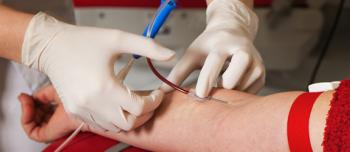Earlier this year, the Plasma Protein Therapeutics Association (PPTA) approved a draft form of the document, “Recovered Plasma Specification,” and posted it for industry and public comment. The purpose of the document is to ensure that both source plasma and recovered plasma, the two main types of plasma used for therapeutic purposes, are vetted with equal stringency. PPTA is the primary advocate and representative for the world’s leading source plasma collectors and producers of plasma-derived and recombinant biological therapies. It works cooperatively with patient groups, policymakers, regulatory agencies and others to address issues facing patients and industry.
Source plasma is taken from a donor using plasmapheresis, which separates it from other blood components. It is then frozen immediately for the manufacture of therapies to treat various disorders. Recovered plasma, on the other hand, is taken from whole blood donations or obtained from fresh frozen plasma that has expired. Recovered plasma, which has no expiration date and may be stored either in a frozen or liquid form, is essentially a by-product derived from whole blood collection, often from volunteer blood banks.
While both types of plasma are used to manufacture therapies such as factors VIII and IX for hemophilia A and B or intravenous immune globulin for immune deficiencies, only source plasma collection is subjected to rigorous donor screening, testing and viral marker rate standards for blood-borne pathogens. These pathogens include hepatitis A and B, and the human immunodeficiency virus. In addition, most source plasma collection centers are certified by PPTA’s International Quality Plasma Program (IQPP), which was created to enhance quality and safety in plasma collection by focusing on donor and center management.
If adopted, the new specification would extend PPTA’s Quality Standards of Excellence, Assurance and Leadership (QSEAL) program to include recovered plasma. According to PPTA, these are voluntary standards that go “beyond regulatory requirements and help define the regulations as they apply to fractionation of plasma for plasma therapeutics.” Manufactures that meet certain criteria, including the use of only source plasma from IQPP-aligned collection centers, are certified by the QSEAL program. Currently, QSEAL is only applicable to the collection, processing and testing of source plasma by member fractionators of plasma products.
The National Hemophilia Foundation (NHF) has responded to PPTA’s call for comment by submitting a letter on April 21, 2010. The letter states NHF’s support for PPTA’s proposed extension of QSEAL standards for recovered plasma, but with some caveats. Those include concerns about industry transparency on plasma origins, what proportions of source and/or recovered plasma are contained in each lot, and creating uniform standards on viral markers for collectors of source and recovered plasma.





